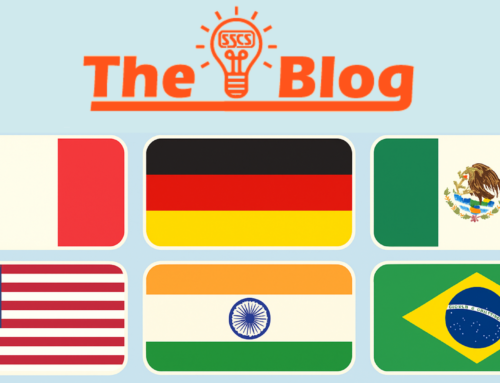Think you’ve got a bad commute? Think again.
This is part 2 of a two-part article. To check out part 1, which describes the criteria for determining how awful driving actually is, click here.
Now let’s dive into the five worst countries for driving. Countries are ranked on a scale of 1 (the worst) to 10 (ideal).
3.7/10: Ecuador
 It’s beautiful, balmy, biodiverse, and full of natural attractions, all characteristics that place Ecuador high on the list of places to visit for many travelers. However, tourists visiting the country might want to recruit a cab or ride the bus, as Ecuador also has one of the lowest Driver Satisfaction Index scores in the planet. With Ecuador’s relatively low GDP and annual income per capita ($11,200), regions of the country are bedeviled by spotty road maintenance. Further, the country’s unique geography, with the Amazon Basin on the east, coastal lowlands to the west, and the Andes rising up in between them, means that drivers have fewer routes to get from place to place. The country’s capital, Quito, is pooled in a mountain valley with limited ingress and egress. One of the country’s main freeways, the E35, weaves through the Andes, making it subject not only to congestion, but also landslides and harsh weather. Photo by Bbb.
It’s beautiful, balmy, biodiverse, and full of natural attractions, all characteristics that place Ecuador high on the list of places to visit for many travelers. However, tourists visiting the country might want to recruit a cab or ride the bus, as Ecuador also has one of the lowest Driver Satisfaction Index scores in the planet. With Ecuador’s relatively low GDP and annual income per capita ($11,200), regions of the country are bedeviled by spotty road maintenance. Further, the country’s unique geography, with the Amazon Basin on the east, coastal lowlands to the west, and the Andes rising up in between them, means that drivers have fewer routes to get from place to place. The country’s capital, Quito, is pooled in a mountain valley with limited ingress and egress. One of the country’s main freeways, the E35, weaves through the Andes, making it subject not only to congestion, but also landslides and harsh weather. Photo by Bbb.
3.3/10: Columbia
 Colombia shares some of Ecuador’s geographical challenges. Several of its major cities, Medellin, Cali, and the capital, Bogota, are in mountainous regions where steep hillsides and ridges prohibit city grids and ring road systems. The metropolitan area around Bogotá features the northern Andes to the east and west, and while the Amazon Basin that dominates the country’s southeastern region is comparatively more navigable, hardly anyone lives there. The country has a slightly lower-than-average per-capita income of $14,500/year, limiting the tax revenues that can be devoted to transportation improvements. But even with excellent financial resources, the topography and population distribution of Colombia would still be challenging to design and administrate. Photo by Joe Ross.
Colombia shares some of Ecuador’s geographical challenges. Several of its major cities, Medellin, Cali, and the capital, Bogota, are in mountainous regions where steep hillsides and ridges prohibit city grids and ring road systems. The metropolitan area around Bogotá features the northern Andes to the east and west, and while the Amazon Basin that dominates the country’s southeastern region is comparatively more navigable, hardly anyone lives there. The country has a slightly lower-than-average per-capita income of $14,500/year, limiting the tax revenues that can be devoted to transportation improvements. But even with excellent financial resources, the topography and population distribution of Colombia would still be challenging to design and administrate. Photo by Joe Ross.
3.1/10: Venezuela
 While Venezuela has some of the cheapest gas prices on earth, and much of the country is flat and easily navigable by vehicle, the urban centers of Venezuela, including Barquisimeto, Valencia, and the capital, Caracas, are clustered together along the coast in the northeasternmost stretches of the Andes. This means that Venezuela’s drivers suffer from some of the worst traffic in the world. The center, suburbs, and roads of Caracas are sunk down in mountain valleys and basins, making it difficult for motorists to find alternate routes in the event of accidents or other road hazards. Venezuela’s current per-capita income of $12,400 limits the country’s capacity to put resources into transportation. As with its neighbor Colombia, however, even if Venezuela had huge financial resources to devote to roads and bridges, Venezuelans would still face a formidable challenge in improving the commute times and traffic patterns around its largest cities. Photo by Beatrice Murch.
While Venezuela has some of the cheapest gas prices on earth, and much of the country is flat and easily navigable by vehicle, the urban centers of Venezuela, including Barquisimeto, Valencia, and the capital, Caracas, are clustered together along the coast in the northeasternmost stretches of the Andes. This means that Venezuela’s drivers suffer from some of the worst traffic in the world. The center, suburbs, and roads of Caracas are sunk down in mountain valleys and basins, making it difficult for motorists to find alternate routes in the event of accidents or other road hazards. Venezuela’s current per-capita income of $12,400 limits the country’s capacity to put resources into transportation. As with its neighbor Colombia, however, even if Venezuela had huge financial resources to devote to roads and bridges, Venezuelans would still face a formidable challenge in improving the commute times and traffic patterns around its largest cities. Photo by Beatrice Murch.
3.0/10 Guatemala
Guatemala shares features of other countries like Ecuador, Venezuela and Columbia that rank low on the Driver Satisfaction Index. Its per-capita income is significantly below the world average, at $8,200, and much more problematically, the country’s population is heavily concentrated into mountain basins and valleys. Quetzaltenago, Huehuetenango, and the capital, Guatemala City, the most populous city in Central America, lie relatively close together in the Sierra Madre Mountains. While Guatemala boasts the highest peaks in Central America, the rugged urban landscape that many Guatemalans see on a daily basis compresses traffic and roadways into tight corridors and makes driving there time consuming and hectic. Photo by Colocho.
2.1/10: El Salvador
 El Salvador is one of the smaller countries in Central America, and its population is heavily concentrated in the city and suburbs of San Salvador, a metropolis of about 2.4 million. As with the other countries that have low Driver Satisfaction Index scores, El Salvador has a low income-per-capita ($8,900), and much more importantly, its capital and several other major cities are built in mountain valleys and volcanic basins. While in terms of traffic alone, El Salvador ranks higher than Venezuela, Guatemala and the Philippines, the city of San Salvador itself has the worst traffic on earth, according to Waze’s data. Additionally, El Salvador ranked as the least safe place to drive on the planet, in terms of accidents and road hazards, had the second worst road quality behind Romania, as well as the highest costs of vehicles and driving, taking account average income, second only to the Philippines. Photo by José Alejandro Ãlvarez RamÃrez.[/fusion_builder_column][/fusion_builder_row][/fusion_builder_container]
El Salvador is one of the smaller countries in Central America, and its population is heavily concentrated in the city and suburbs of San Salvador, a metropolis of about 2.4 million. As with the other countries that have low Driver Satisfaction Index scores, El Salvador has a low income-per-capita ($8,900), and much more importantly, its capital and several other major cities are built in mountain valleys and volcanic basins. While in terms of traffic alone, El Salvador ranks higher than Venezuela, Guatemala and the Philippines, the city of San Salvador itself has the worst traffic on earth, according to Waze’s data. Additionally, El Salvador ranked as the least safe place to drive on the planet, in terms of accidents and road hazards, had the second worst road quality behind Romania, as well as the highest costs of vehicles and driving, taking account average income, second only to the Philippines. Photo by José Alejandro Ãlvarez RamÃrez.[/fusion_builder_column][/fusion_builder_row][/fusion_builder_container]







Leave A Comment